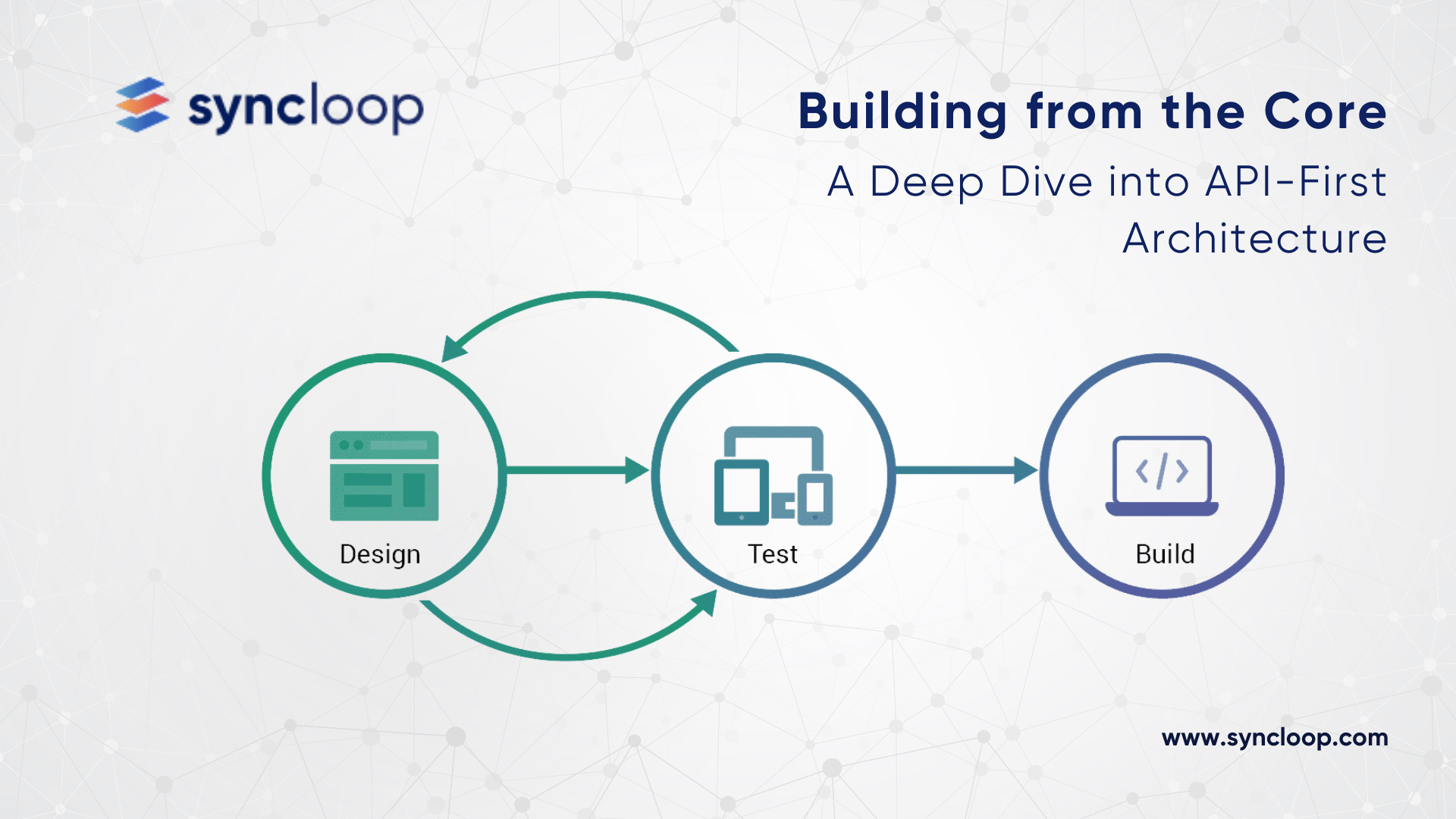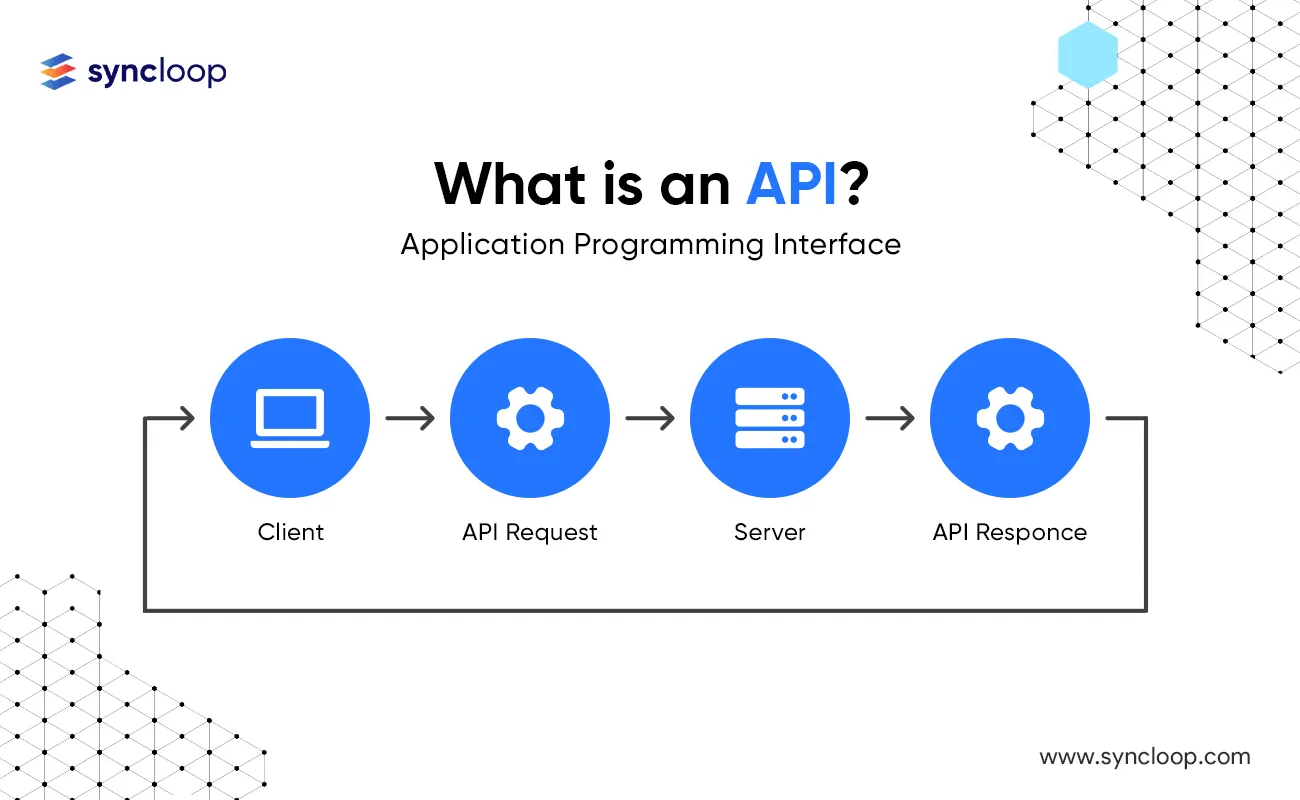Building from the Core: A Deep Dive into API-First Architecture
Posted by: Deepak | July 01, 2024

Categories: API-First Design, Software Development Strategy, Developer Productivity
In today's dynamic digital landscape, APIs (Application Programming Interfaces) serve as the critical communication channels between applications and services. The API-first approach represents a design philosophy that prioritizes APIs as the foundational building blocks for software development. This blog delves into the core principles, benefits, implementation strategies, and considerations of API-first architecture.
Why API-First Matters
Traditional development methodologies often treat APIs as an afterthought, designed and implemented after core functionalities are built. The API-first approach disrupts this paradigm by prioritizing API design from the outset. Here's why it matters:
- Improved Developer Productivity: Clearly defined APIs with well-documented request and response structures enable developers to focus on building functionalities rather than wrestling with integration complexities later in the development cycle.
- Enhanced Reusability: API-first design promotes the creation of reusable and modular APIs, facilitating easier integration across various applications and platforms.
- Streamlined Collaboration: API-first fosters communication between development teams by establishing a shared understanding of system functionalities through well-defined API contracts.
- Faster Time-to-Market: By focusing on APIs upfront, developers can begin integration and testing earlier, accelerating delivery of functionalities to users.
Statistics highlight the growing adoption of API-first:
A 2023 Postman survey reveals that 63% of developers utilize an API-first approach for building new applications.
What is API-First Architecture?
API-first architecture is a design philosophy that emphasizes APIs as the primary interface for interacting with a system's functionalities. Here are the key tenets of this approach:
- API Design First: APIs are designed and documented before any significant backend code is written. This establishes a clear contract for communication between different components of the system.
- Focus on Reusability: API design prioritizes reusability, ensuring APIs can be easily integrated with various applications and services, both internally and externally.
- Versioning and Deprecation: API-first architecture utilizes clear versioning practices and well-defined deprecation strategies to manage API evolution and minimize disruption for consumers.
- Focus on Developer Experience: API documentation and tooling receive high priority, aiming to provide a seamless development experience for internal and external developers leveraging the APIs.
Implementing an API-First Strategy
Here are key steps for implementing an API-first strategy in your organization:
- Define API Strategy and Goals: Outline the purpose and target audience for your APIs. Align your API strategy with your overall business objectives.
- Design Reusable and Consistent APIs: Utilize well-defined design principles and style guides to ensure consistency across your API ecosystem.
- Focus on Documentation and Developer Experience: Invest in clear and comprehensive API documentation that includes code samples, tutorials, and interactive tools like API playgrounds for developers.
- Choose the Right Tools: Utilize API design tools like SwaggerHub or Postman to facilitate collaborative API design, documentation generation, and version control.
- Integrate Testing: Integrate API testing throughout the development lifecycle to ensure API functionality and adherence to design specifications.
Integration Strategies for Different Industries
API-first architecture can be tailored to the specific needs of various industries:
- FinTech: Financial institutions can leverage API-first to design secure and well-documented APIs for mobile banking applications and integration with third-party financial services providers.
- E-commerce: E-commerce platforms can leverage API-first to create reusable APIs for product catalog management, shopping cart functionalities, and secure payment processing integrations.
- Healthcare: Healthcare providers can utilize API-first to design secure APIs for patient data management and controlled access for authorized healthcare applications, ensuring patient data privacy compliance.
Benefits and Use Cases Across Industries
The API-first approach offers numerous benefits for organizations of all sizes:
- Improved Agility and Innovation: API-first fosters rapid development cycles and promotes experimentation with new functionalities through well-defined API interfaces.
- Enhanced Developer Productivity: Focusing on APIs upfront reduces integration complexities and enables developers to focus on core functionalities.
- Simplified Collaboration and Communication: Shared API contracts create a common language for development teams, facilitating collaboration and communication throughout the development lifecycle.
- Increased Re-usability and Maintainability: Modular and well-documented APIs are easier to maintain, promote code reuse, and simplify future integrations.
Here are some specific use cases for API-first architecture:
- Developing a Mobile Backend as a Service (MBaaS): (Continued) facilitating the development of mobile applications without reinventing the wheel for common functionalities.
- Building a Microservices Architecture: API-first is a natural fit for microservices architectures, where loosely coupled services interact through well-defined API contracts, promoting scalability and maintainability.
- Exposing Internal Data and Functionalities: Organizations can utilize API-first to securely expose internal data and functionalities to external partners or developers through well-documented and controlled APIs.
Latest Tools and Technologies for API-First Development
The API-first landscape offers a wealth of tools and technologies to support your API development journey:
API Design Tools:
- Syncloop: Syncloop's visual design environment allows for collaborative API design, fostering clear communication and stakeholder buy-in for API functionalities.
- SwaggerHub: A popular platform for collaborative API design, documentation generation, and mocking for API testing.
- Apiary: A comprehensive API design platform with version control, collaboration features, and integration with popular CI/CD pipelines.
API Mocking Tools:
- Moesif: A tool for creating realistic API mocks for development and testing purposes.
- Mockoon: A user-friendly platform for creating mock APIs with various response formats and scenarios.
- Insomnia: A powerful API client with built-in mocking capabilities for testing APIs during development.
API Documentation Tools:
- ApiaryDocs: A dedicated tool for generating interactive and user-friendly API documentation.
- Readme.io: A platform for creating and hosting beautiful and informative API documentation for developers.
- Swagger Editor: A web-based editor for creating and editing Swagger API specifications.
Disadvantages and Considerations
While API-first architecture offers significant benefits, there are also some considerations to keep in mind:
- Initial Investment: Shifting to an API-first approach may require initial investment in training developers on API design principles and tooling.
- Increased Complexity: Managing multiple APIs and versions can introduce complexity, requiring robust versioning practices and governance strategies.
- Shifting Development Culture: Transitioning to an API-first approach may necessitate changes in development workflows and collaboration practices.
Conclusion
API-first architecture is a powerful approach to building modern and scalable software applications. By prioritizing API design upfront, you can streamline development processes, enhance developer productivity, and foster innovation within your organization. Syncloop, along with your chosen API design tools and development methodologies, can be a valuable asset in your API-first journey. Remember, embracing an API-first approach can empower your development teams to deliver high-quality and future-proof software solutions.
Back to Blogs

